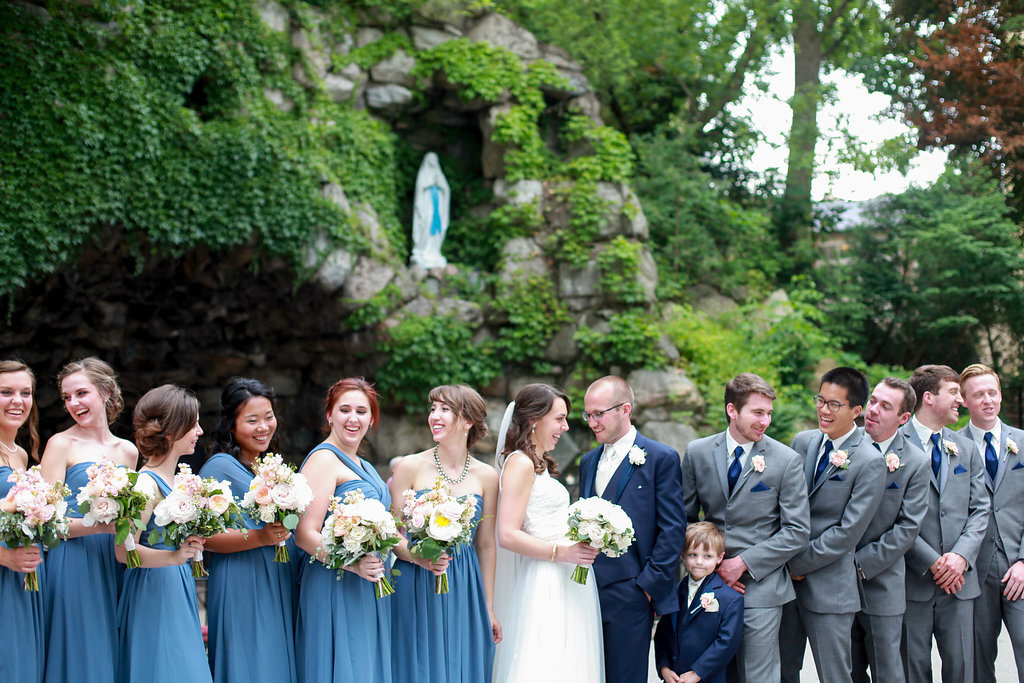Vendor Week 2021 | What is Your Relationship Founded On? Scriptures to Ground You Throughout Engagement & Marriage
/KRISTEN McGAUGHEY & SINIKKA ROHRER
If 2020 taught us anything, surely it is that life is unpredictable and uncontrollable. Reflecting on the year that passed, and sitting in the tension of these current tumultuous days, I have found myself frequently running back to consider three questions:
Where does my hope lie?
What am I trusting in?
Do I really believe that God is good?
Photography: Soul Creations Photography
This may seem like a weird way to begin a blog post on marriage. But I've found it to be so true that what I believe, trust in, rely upon, and adhere to affects my entire life, and moreover my marriage. We must be anchored to truth and have a firm foundation on which to stand!
Jesus tells us in Matthew 7:24-25 that Everyone who listens to these words of mine and acts on them will be like a wise man who built his house on rock.r 25 The rain fell, the floods came, and the winds blew and buffeted the house.s But it did not collapse; it had been set solidly on rock.
When the foundation was solid, the house stood. What does that mean for us today?
If you look closely at this verse, you'll see that Jesus gives us a few key instructions.
First, we must 'hear his words'.
God has given us a treasure by giving us his Word, the Bible. We see the heart of our Father in these pages. We see the life and teachings of Jesus. We see the power of the Holy Spirit.
Hebrews 4:12 tells us that Indeed, the word of God is living and effective, sharper than any two-edged sword, penetrating even between soul and spirit, joints and marrow, and able to discern reflections and thoughts of the heart. Scripture changes us! We must be women of the Word to establish our lives and our marriages on a solid foundation.
Secondly, in the verse, Jesus tells us that we not only need to hear his words, but also to do them.
The book of James echoes that same instruction, Be doers of the word and not hearers only... (James 1:22).
Thirdly, Jesus warns us that the storms will come.
He tells us in John 16:33 that in the world we will have trouble (emphasis mine), but to take heart, for He has overcome the world. It is this that gives us reason to have hope, firm and secure (Hebrews 6:19).
We do not have to worry about tomorrow (Matthew 6:34) for he will never leave or forsake us (Joshua 1:9), as he is with us always. (Matthew 28:20). What beautiful promises we have to cling to, whatever life may throw our way throughout our marital journey.
I don't know how 2020 shook out for you and your groom, or how the forecast for 2021 is looking. Maybe you're currently still trying to figure out rescheduled wedding plans. Maybe you had a quarantine wedding where most attended via Zoom. Maybe you're newly married and trying to figure out this new season of life as a wife. Maybe you're five, ten, or fifteen years married with a crew of babies underfoot.
Whatever your season may be, these things are vital to consider. We will never outgrow our need to center ourselves on Truth. We will never arrive at a place where we don't need to be in the Word, in prayer, and in fellowship.
We will never escape our desperate need for Christ.
Jesus tells us in John 15:5, I am the vine, you are the branches. Whoever remains in me and I in him will bear much fruit, because without me you can do nothing. A branch will wither apart from the vine, and so it goes with us; we must cling to Him, building our days, our marriages, and our lives on the solid rock of Jesus Christ.
As you consider these things, I'd like to encourage you to spend some time reading the following Scriptures this week:
Ask the Lord to show you how these truths can be applied to your life right now:What does it look like to love your fiancé? How can you demonstrate the love of Christ in your daily living? What does obedience to his Word look like right now?
I am praying that you will be rooted and grounded in love, that you may be able to comprehend the width, length, depth, and height of Christ’s love. My team and I pray you may truly know the love of Christ which surpasses all knowledge, and be filled with all the fullness of God (Ephesians 3:17-19).
We are praying that your marriage be blessed, and that you will continue to build your marriage on the firm foundation of Jesus, and always abide in him, being hearers and doers of the Word. May you feel the Lord’s presence around you as we lift you up!
About the Authors: Kristen McGaughey and Sinikka Rohrer of Soul Creations Photography are part of an Indiana-based photography team offering a unique client experience centered on spiritual and practical support for Christian and Catholic brides on their way to the aisle and all throughout their marital journey.
WEBSITE | FACEBOOK | INSTAGRAM | PINTEREST | YOUTUBE | PODCAST











































